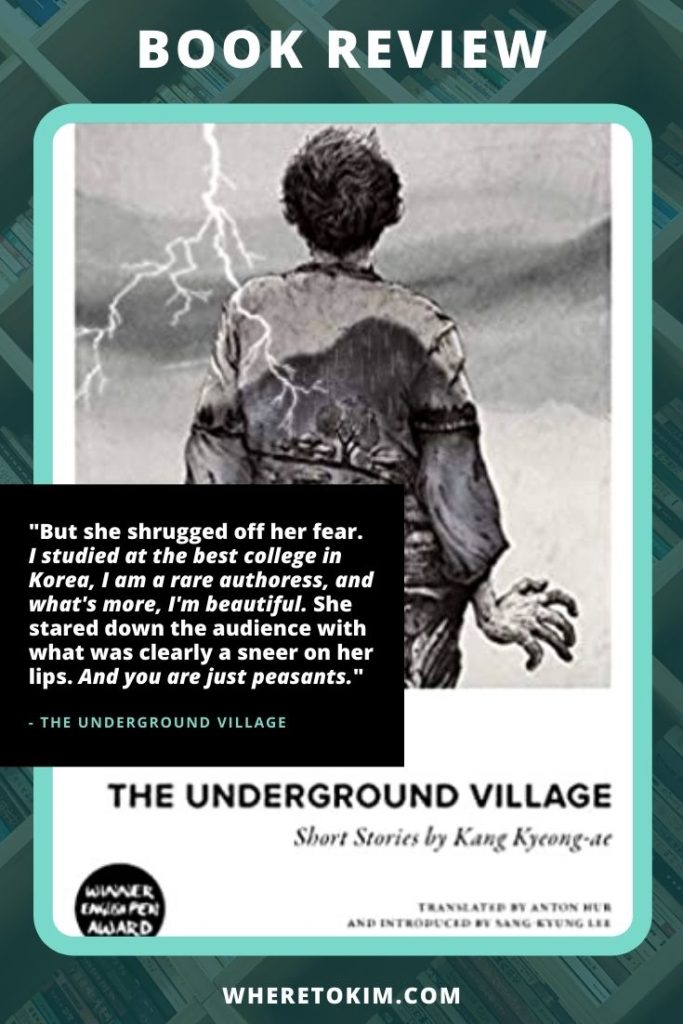The Underground Village by Korean author Kang Kyeong-ae is a storybook giving insight into the lives of those that came before us. Placeless stories, sometimes timeless, showing the harsh reality of life.
Location: Manchuria (China) and Korea in the first half of the 20th century
The Underground Village synopsis
Kang Kyeong-ae (1906-1944) was a Korean writer whose stories are remarkable for their rejection of colonialism, patriarchy, and ethnic nationalism during a period when such views were truly radical and dangerous. Born in what is now North Korea, Kang wrote all her fiction in Manchuria during the Japanese occupation and witnessed the violence and daily struggles experienced by ethnic Koreans living in the Japanese puppet state of Manchukuo. Kang’s riveting stories are full of sensitivity, defiance, and a deep understanding of the oppressed people she wrote about.
This collection, beautifully translated by Anton Hur, contains all the Korean-language short stories by Kang Kyeong-ae. Sang-kyung Lee’s excellent introduction provides deep insight into Kang’s achievements and the social and historical contexts in which she wrote.
Book review
Let me start by quoting the much-appreciated introduction to the story collection: “Kang’s works are instead infused with the desolation in people’s lives caused by the creation of the Japanese puppet state of Manchukuo, the ruthless reality of being ruled by soldiers, and the strenuous efforts required to protect one’s individual and social life against such forces.”
Because she lived in the middle of it, Kang Kyeong-ae writes stories from a unique point of view. Her stories deal with the hardships of those without rank or property, the peasants so to say. This shows for example in the sad story of the mother in Fang Tong/Peasants. The story is set in Manchuria, but could have taken place anywhere around the world. Every single story is relevant and has great historical value.
The characters in the stories face hard choices, often dealing with the balance between the community and the individual. Will you buy something nice for yourself or buy medicine for a friend of a friend? Should you help people that are starving and risk starving yourself in the near future?
Classes are prominent in the stories and can even be seen in the difference between a peasant and a literary author. The narrators are mostly women, sometimes of means and sometimes poor, both dependent and independent. Through this, you experience different perspectives, but no matter who tells the story, life is harsh and people are suffering from starvation, loss, or heartbreak.
I often admire the ending paragraphs like in the story Darkness. Even though this story ended, another story is starting. The story Anguish nearly left me in anguish and I could feel the selfishness of people looking away in The Man on the Mountain. The author is skilled at transferring energy and feelings to the reader. You read the slow scenes slowly and in the fast scenes, you read faster as if someone is hurrying you along.
Feelings of anguish, regret, and hopelessness: you will recognize all of them and believe them completely. Even though The Underground Village was written almost a century ago, it doesn’t feel aged (also thanks to the good translation by Anton Hur) and is worth reading.
Interested?
Get your copy of The Underground Village from Amazon.







